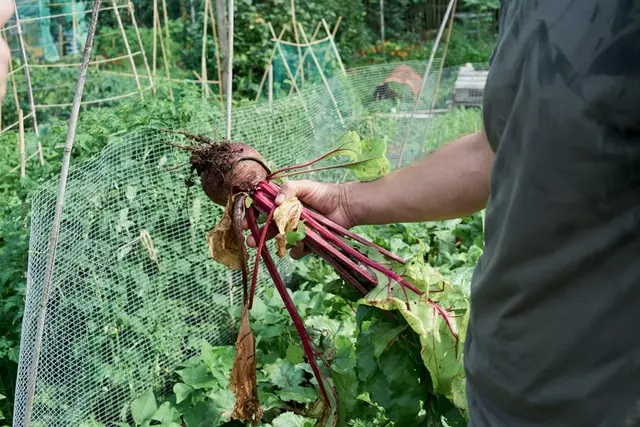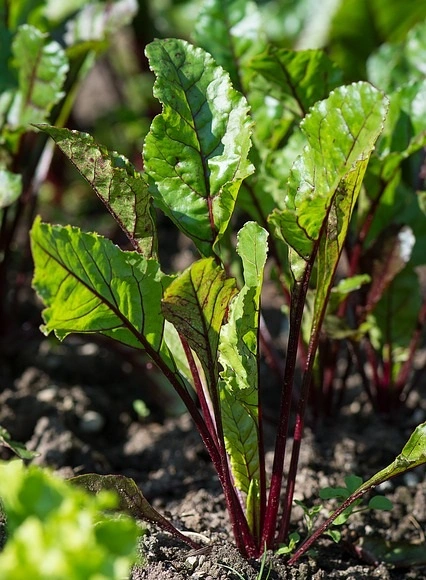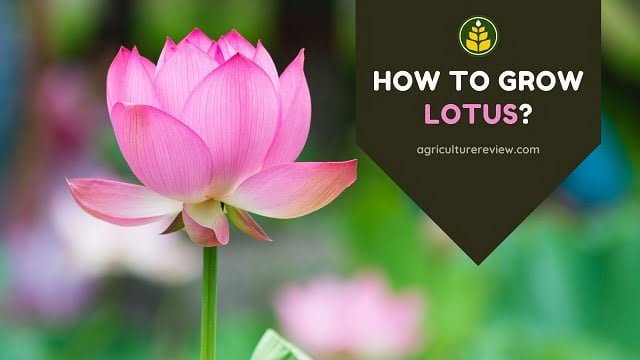This ultimate guide on how to grow beetroot plant will help you to understand growth pattern of beetroot. You need to follow simple and easy guide that I am going to share with you in this article. However, growing beetroot plant is very easy.
Table of Contents
Introduction
Beetroot or Beta vulgaris is an edible root vegetable that you can grow in your garden. Beetroot is also known as Beets, Table Beet, Garden Beet, Red Beet, Golden Beet, Dinner Beet, etc. You can either consume beetroot in the form of salad, juice, or pickle.
They are famous for their delicious taste as well as nutritional value. Consuming beetroots help in lowering blood pressure, improving blood flow and exercise performance.
They are low in calories but are great source of Proteins, Fibres, Folate, Vitamin-C, Vitamin-B6, Potassium, Magnesium, etc. Moreover growing beetroots in garden is easy as they require less space and care as compared to other vegetable plants such as Bottle gourds or Pumpkins.
How To Grow Beetroot At Home?

To grow beetroot plant , you need to know about growing season, potting mix, propagation method, sunlight, watering, fertilizers, etc. This will help you to succeed in growing and caring for your plant. Hence read all these points very carefully till the end.
Growing Season
You can grow beetroots in USDA plant hardiness zones 2, 3, 4, 5, 6, 7, 8, 9, and 10. Depending on the region you are living sowing time can vary for beetroot. If you are living in warm tropical to sub tropical regions then you can grow beetroot as a winter crop.
For this purpose start sowing seeds from August to November. Ideal temperature range for germination of beetroot seed is between 10 to 24o Celsius.
Therefore if you are trying to grow in cold temperate or hilly regions then you can start sowing seeds during early spring season.
Potting Mix
Beetroot plant loves well drained, sandy to loamy soil that have soil pH in the range to 6.0 to 7.0. Avoid growing them in heavy clayey soil. If you do not have ideal soil in your garden then prepare potting mix with 30% soil + 30% sand + 40% bulky organic manure.
In this potting mix you can also add a handful of neem cake fertilizer to enhance growth of the plant.
Selection Of Pot
You can grow beetroots in small to medium sized pots with at least 2 to 4 drainage holes at the bottom. Drainage holes are necessary to remove excess water from the pot. If you are growing beets in bulk then follow planting distance of 7 centimetres between each plant.
How To Germinate Beetroot Seeds?
To germinate beetroot seeds purchase high quality disease resistant beetroot seeds from the market. Practice either direct sowing in the main pot or in germination tray. You can use the same potting mix for germination of seeds.
Sow seeds at 1 to 1.5 centimetres depth and cover them with potting mix. Apply water gently and keep the germination tray or pot under partial shade sunlight. After 6 to 7 days you will notice growth of seedlings.
In nearly about 24 days after sowing of seeds, new seedlings will become ready to be transplanted. You can avoid transplantation by sowing seeds directly in the main pot at required distance.
Sunlight
Beetroot plant can grow well in full to partial shade sunlight. However for better growth grow beetroots where at least 6 hours of direct sunlight in available.
Watering
Beetroot plant loves moderate watering. Do not let the top layer soil to dry out. Keep checking the moisture of the soil. If it seems drying then add little amount of water time to time. But avoid flooding with water or soggy soil as it can harm the plant.
Fertilizers
Adding too much fertilizer is not recommended for growing beetroots. Add potassium rich fertilizer to enhance the growth of root vegetable. If you will add too much nitrogen rich fertilizer then it will promote vegetative growth.
This will result in increased leaf size but decreased root size. You can add banana peel fertilizer once in a month to enhance growth and development of root. Adding organic bio fertilizers such as jeevamrut once after every 15 days will also help in overall growth.
Pests & Disease
Beetroot plant can get affected by pest like Leaf miners, Leaf hoppers, Flea beetles, etc. And diseases such as Alternaria leaf spot, Bacterial leaf spot, Beet rust, Beet curly top can affect the growth of your beetroot plant.

Harvesting
After planting of beetroots it will take nearly about 2 months to become mature to be harvested. Start harvesting when upper portion of exposed root looks like golf ball size. Loosen the soil around the base of the root and gently pull upwards to harvest.
Author’s Note
I guess you are now clear on growing beetroots in your garden. If you have any ideas, queries, or suggestions then you can comment below. You can also connect with Agriculture Review on Facebook, Instagram, and Koo.





I planted a lot of beetroot and they were growing well… Unfortunately mice ransacked the plot and ate every thing. I tried everything that I could find online to save at least few but nothing worked…. Any suggestions?
Sad to hear about your loss. Mice can cause serious destruction to the crop and needs effective control measures. I prefer installing mice traps around the growing plot with baits, along with this you can also use poison baits repeatedly till the mice population gets controlled. However using poison baits depends on your choice. You can also cover the plant area with nets so mice won’t be able to come in contact with your plants.
I hope this will help!